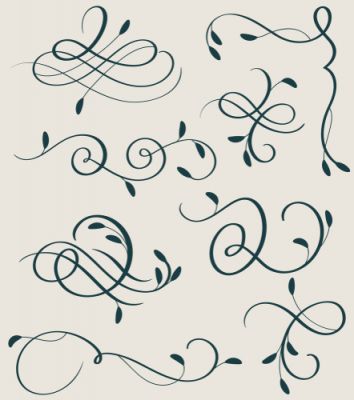 Selecting your wedding invitations can turn into a major undertaking. You’ll make decisions about the typeface, color, type of paper, and other embellishments used to craft your final product. However, there may be an additional element to consider when putting together your final package: addressing your envelopes. Calligraphy is only one possible choice, but it’s a good idea to learn about all possible options as you plan your nuptial celebration.
Selecting your wedding invitations can turn into a major undertaking. You’ll make decisions about the typeface, color, type of paper, and other embellishments used to craft your final product. However, there may be an additional element to consider when putting together your final package: addressing your envelopes. Calligraphy is only one possible choice, but it’s a good idea to learn about all possible options as you plan your nuptial celebration.
A Brief History of Calligraphy
According to the Encyclopedia Britannica, calligraphy’s roots can be traced back to the Middle East and Asia. As a valuable skill, it played a role in the transmission and preservation of religious texts. “Tughras,” or stylized Arabic script monograms, are created when an artist arranges the characters of a word, phrase, or name into a design. During the Middle Ages, monasteries were often tasked with reproducing academic, literary, and religious texts. Many medieval manuscripts that have survived to modern times display a specialized type of lettering commonly known as uncial script. This style is the basis for the modern calligraphy you may find on wedding invitations, certificates, and other documents.
Using Calligraphy for Your Wedding
The Knot points out that calligraphy usually appears on the inner and outer envelopes of wedding invitations. Confused about which envelope is which? Emily Post Institute explains that the outer envelope is the one that bears your guests’ names and addresses, while the inner one should be inscribed with the names of everyone from each household that you’re inviting. For added fancy touches, you can use calligraphy in your wedding programs, menus, escort cards, or any other printed products. Keep in mind, however, that doing so will increase the final bill for services your calligrapher renders.
Tips for Hiring an Artist
Prices can vary widely for calligraphy services, but you can probably expect to pay between $2 and $5 for each envelope. Additionally, most artists can have a turnaround time of about two weeks, unless they’re in high demand and have many projects to complete. The Knot advises following some smart steps when searching for a vendor:
- Look for an artist with specialized training in calligraphy.
- Ask to see references and a portfolio of previous work.
- Request and evaluate lettering samples from each artist.
- Ask for a detailed quote. Be sure to provide the calligrapher with key details such as your wedding date, guest count, theme, formality level, and the exact services you want.
Once you’ve found your vendor and secured his or her services, you’ll need to supply a detailed guest list with names, addresses, and titles. You should double-check your list to ensure that everything is spelled properly, but it’s also wise to review the envelopes to catch any needed last-minute corrections before you ship off your invites.
Must Invitations Always Be Hand Written?
If you don’t have the room in your budget for a professional calligrapher, you may have some other options. An August 2014 Huffington Post piece reveals that most etiquette experts favor the practice of addressing invitations by hand. If your penmanship’s not the greatest, you struggle with motor coordination issues, or you have a disability that prevents you from handwriting your materials, you can print directly to the envelopes using a fancy script-style font. Just make sure the typeface is legible so that your invites can be easily processed and sent by the US Postal Service.
Calligraphy is an art form that’s existed for hundreds of years. When used on your wedding invitations, it can add some elegance and flair. Wise practices include doing your homework and finding a skilled artist whose services fit your budget. By following this advice, you’ll get the aesthetic you desire on your invites and other printed materials for your wedding.
Add Your Comment